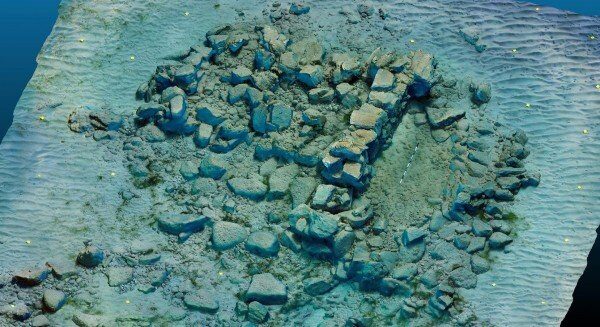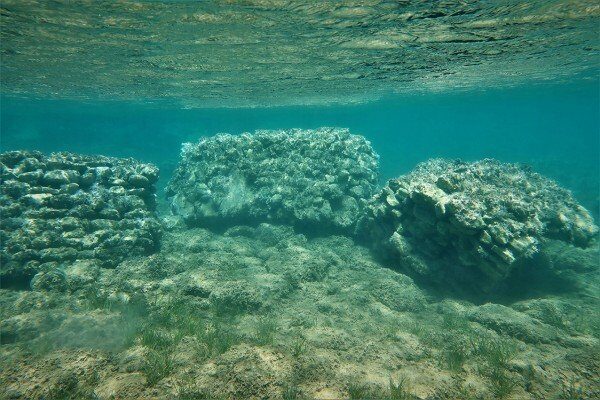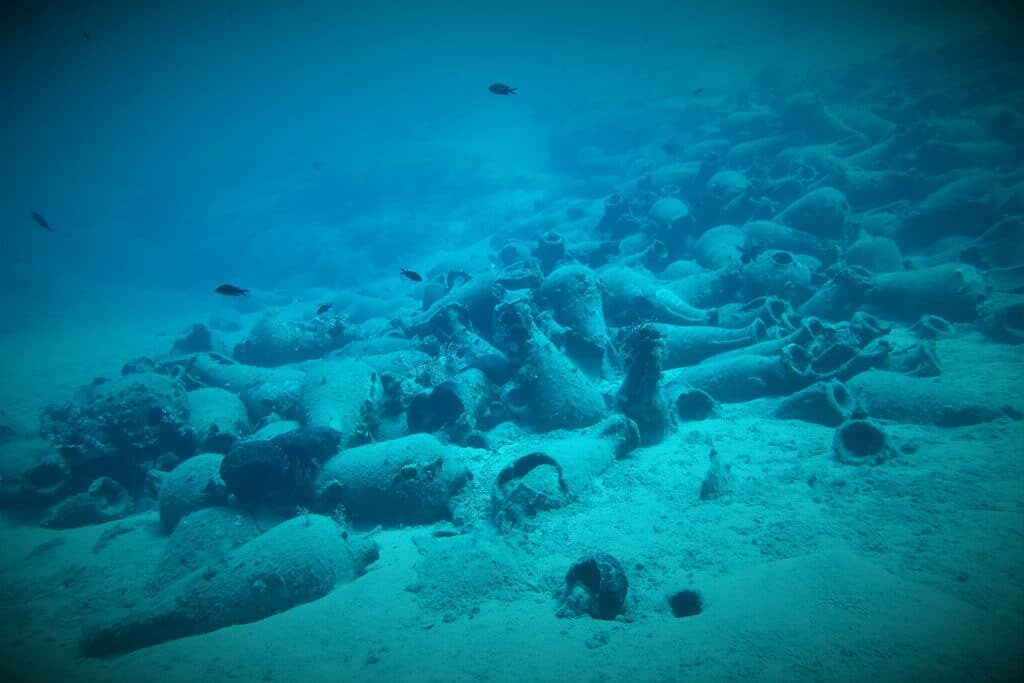
The underwater research, undertaken by the Ephorate of Underwater Antiquities in the Gulf of Palekastro was completed in August.
For the first time, the remains of a shipwreck were found in the form of a number of stunningly lovely amphorae from the second century AD, resting on the seabed as they had been loaded onto a ship that researchers believe most likely originated from the Iberian Peninsula.
Its cargo, which has been preserved in what the archaeologists say is fairly good condition, appears to be important evidence of the patterns of ancient maritime trade routes that crossed the Mediterranean during that period.

The researchers are investigating the shoreline and the wider area of the bay to determine the extent of its use throughout its various phases, from antiquity onward.
Submerged ancient building remains from at least two historical periods were found by the team.
In the center and southern part of the Gulf of Kouremenos, a number of building structures and large shards from pithos (large vases used for storage purposes) were found embedded in the rocks of the seabed, which are attributed to the Minoan civilization.
The first advanced Bronze Age civilization of Europe was established by the Minoans about 5,000 years before the present time, according to the most recent research.
The island of Santorini was once home to a glorious Minoan civilization along the slopes of a volcano, with palatial homes, statuary, mosaics and paintings; it was destroyed by a volcanic event that took place in the year 1650 BC, possibly giving rise to the legend of Atlantis.
The apex of Minoan civilization was in evidence at Knossos, the monumental palace complex outside Heraklion on Crete. There, at the centre of Minoan civilization, a magnificent throne room that was built during the 15th century BC is considered the oldest such room in Europe.

To the north of the bay, a sunken jetty from Roman times — which was first discovered in the 1980s — was documented again as a port shelter was constructed by the team. In that same immediate vicinity an area containing walls and building remains also from the Roman era was also found.
To the north of the Gulf of Hiona similar remains of walls, floors and foundations show that a Roman settlement also thrived there as well.
The Roman era of Greek history began with the Corinthian defeat in the Battle of Corinth in 146 BC. However, before the Achaean War, the Roman Republic had been steadily gaining control of mainland Greece by defeating the Kingdom of Macedon in a series of conflicts known as the Macedonian Wars.
The Fourth Macedonian War ended at the Battle of Pydna in 148 BC, with the defeat of the Macedonian royal pretender Andriscus.
The definitive Roman occupation of the Greek world was established after the Battle of Actium in 31 BC, in which Augustus defeated Cleopatra VII, the Greek Ptolemaic queen of Egypt, and the Roman general Mark Antony. He later conquered Alexandria in 30 BC, the last great city of Hellenistic-era Greece.
The documentation shared by the team of underwater archaeologists included photographic and video documentation — as well as 3D images — of the structures and the wreck, including aerial shots along the shoreline to create accurate photomaps of this important area.



Reader Comments